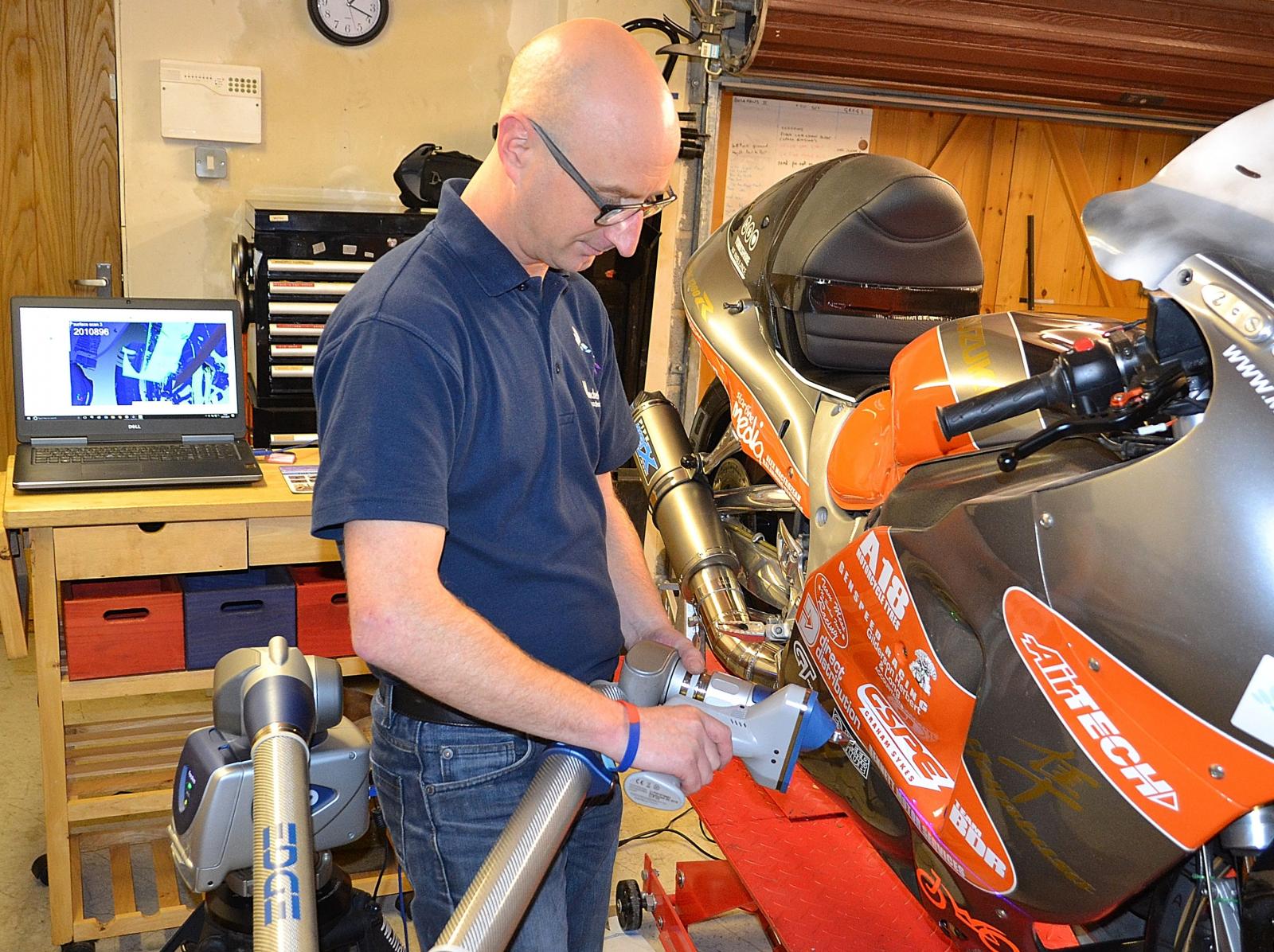
Measurement services specialist Manchester Metrology is using precise laser scanning to help British bike rider Becci Ellis beat her own 260 mph record on conventional motorcycle.
Having smashed the previous mark by 20 mph, Scunthorpe based Becci Ellis set an incredible world record of 264.1mph on 17th August, 2014 and became the world’s fastest woman on a conventional motorcycle over a standing start mile. Achieving the female land speed record also makes her the fourth fastest rider in the world, just 30mph behind the overall world record set by the late American rider Bill Warner.
Becci’s amazing feat was performed at Elvington Airfield in North Yorkshire on a 1300cc Suzuki Hayabusa, that, when launched in 1999, immediately won acclaim as the world's fastest production motorcycle. In preparation for Becci’s record breaking run, her Hayabusa was highly modified by her husband, Mike Ellis with the help of a team of dedicated volunteers and sponsors, enabling it to generate a mighty 650 bhp.
Not satisfied with being the current holder of the record, Becci is now busy preparing for a new attempt to further raise her own record speed. In addition to multiple further mechanical modifications to the previously record breaking Hayabusa, particular attention is now being paid to the aerodynamics of both the bike itself and to the rider.
Rather than use traditional wind tunnel testing method to analyse and improve the bike’s aerodynamic performance, the team behind Becci’s latest record breaking attempt are using advanced virtual simulation techniques.
Increasingly, rather than wind tunnel testing, manufacturers are choosing to use virtual simulation systems in their quest to reduce their products aerodynamic drag. By using computer simulations, engineers and designers are able to model a product’s aerodynamics without the need to construct a physical prototype.
To help gather the raw data needed to enable the best possible virtual simulation outcomes, the team enlisted the help of Manchester Metrology, acknowledged experts in the field of precise laser scanning and data capture. Mindful of the need to acquire highly accurate data, the staff of Manchester Metrology used a FARO Edge ScanArm HD to undertake the critical scanning routines of the bike and rider.
Mike Ellis explained. “Aerodynamic drag is a strong, unwelcome force that increases with the square of the speed; therefore as the speed we achieve doubles, drag quadruples. Given the high speeds that we are looking to reach, it is obvious that much attention needs to be paid to this vital area.
“Without the help of our much appreciated volunteers and sponsors the previously set world record would not have been be possible, nor would our new record attempt. In addition to our long standing friends who have enabled multiple mechanical advantages to be gained, our new attempt to better the previous mark is being helped by the staff of Northumbria University Faculty of Engineering and Environment, Department of Mechanical & Construction Engineering, lead by Professor Robert Dominy FIMechE, C.Eng, MSAE, PhD, DIC,BSc (Hons), who have provided invaluable assistance in the field of aerodynamic virtual simulation.
“The raw data needed by Northumbria University for aerodynamic analysis is being gathered by the staff of Manchester Metrology who are using an advanced FARO Edge ScanArm HD laser scanner to scan all aspects of the bike/rider combination and to generate the required files.
“We consider that virtual simulation methods deliver quicker results than wind tunnels do, in addition they cost less and provide us with better results. A major advantage for us has been that the software used by Northumbria University can instantly indicate where our aerodynamic weaknesses are and provide invaluable feedback on how to improve our designs.”
The advanced Edge ScanArm HD is the latest advancement in FARO’s popular ScanArm product range and provides point cloud capture with rapid speed, superior resolution and high accuracy.
Although relevant to endless other applications, common uses include reverse engineering, certification, prototype part scanning, first article inspection and periodic part inspection.
Philip Knowlson of Manchester Metrology concluded. “Given our need to perform multiple, highly precise scans of the motorcycle and rider, and to generate the vital data required for aerodynamic virtual simulation purposes, we chose to use an Edge ScanArm HD. The advanced FARO product was ideal for this application as it has an exceptional scan rate of up to 560,000 points/second. Also, given the range of different materials we needed to scan, including the bikes faring, wheels and tank, also the rider in her leathers and helmet, it was a major advantage that the Edge ScanArm HD is able to perform precise scanning routines across a range of diverse surface materials without the need for any surface preparation or the use of targets.”
http://manchester-metrology.co.uk/
SIGN UP FOR YOUR ENGINEERING CAPACITY NEWSLETTER NOW!
Back to the Engineering Capacity news page